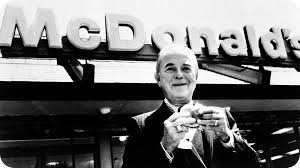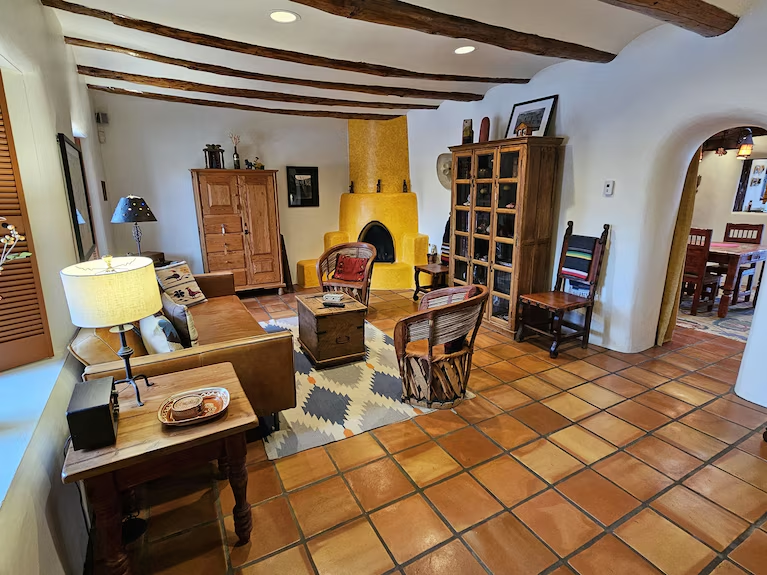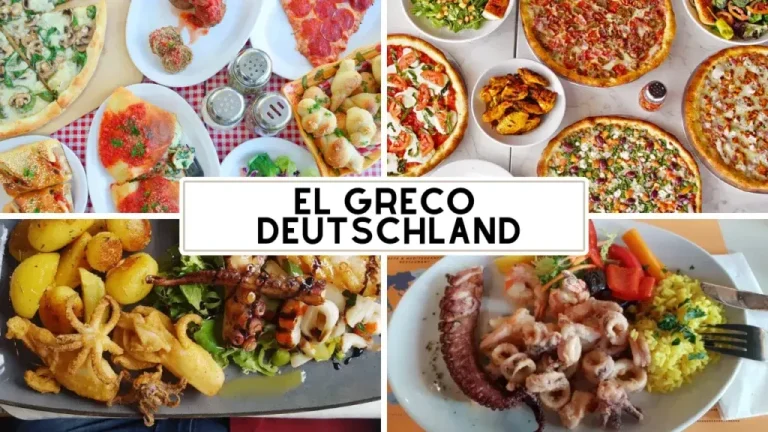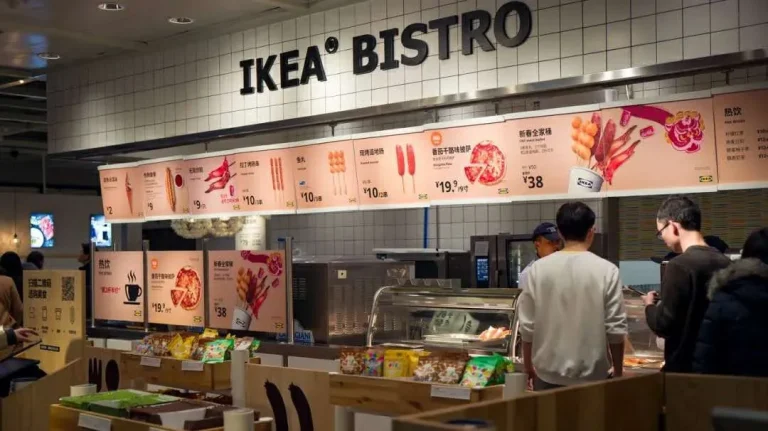How Much Did Ray Kroc Buy McDonalds For?
Are You Curious To Know How Much Did Ray Kroc Buy McDonalds For? In 1961, Kroc purchased the franchise from the McDonald brothers for $2.7 million, a pivotal moment that would change the landscape of the fast-food industry forever. His vision for expansion and innovation transformed McDonald’s from a small chain into an international powerhouse known for its consistent quality and service.
Kroc’s acquisition was not just a business deal; it was the beginning of a new era in fast food, marked by the introduction of standardized operations and aggressive franchising. Whether you’re a fan of fast food or interested in business history, understanding this significant transaction provides valuable insights into how one man’s ambition reshaped an entire industry.
Table of Contents
Early Life and Career Beginnings
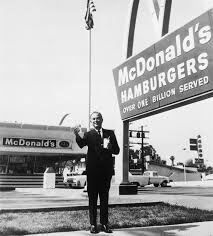
| Aspect | Details |
| Name | Ray Kroc |
| Date of Birth | October 5, 1902 |
| Place of Birth | Oak Park, Illinois |
| Parents‘ Background | Czech immigrants seeking better opportunities |
| Father’s Name | Alois Kroc |
| Father’s Financial Struggles | Experienced ups and downs, made a fortune in land speculation, lost it during the 1929 stock market crash |
| Childhood Influence | Instilled resilience and ambition in Ray Kroc |
| Early Jobs | Paper cup salesman, musician, Red Cross ambulance driver, real estate agent, piano player |
| Age at Red Cross Service | 15 years old (lied about his age) |
| Career Highlights | Worked as a milkshake mixer salesman; experiences shaped his business acumen |
| Major Achievement | Transformed McDonald’s into a global fast-food empire |
Discovering McDonald’s
| Year | Event | Key Individuals | Significance |
| 1954 | Ray Kroc visits McDonald brothers‘ restaurant | Ray Kroc, Richard McDonald, Maurice McDonald | Kroc is impressed by the efficient operations and food quality. |
| Proposal for franchising agreement | Ray Kroc, Richard McDonald, Maurice McDonald | Kroc envisions a nationwide chain but faces initial hesitance. | |
| Kroc convinces the McDonald brothers | Ray Kroc, Richard McDonald, Maurice McDonald | Kroc’s persuasion leads to the start of McDonald’s expansion. | |
| Transformation of the fast-food industry | Ray Kroc, Richard McDonald, Maurice McDonald | Kroc’s ambition leads to a global revolution in fast food. |
The Franchise Agreement

| Aspect | Details |
| Year | 1954 |
| Key Figure | Ray Kroc |
| Initial Inspiration | Impressed by the McDonald brothers‘ efficient operation |
| Franchising Proposal | Kroc proposed a franchising agreement to the McDonald brothers |
| Brothers‘ Hesitation | The McDonald brothers were initially hesitant about the agreement |
| Kroc’s Vision | To create a national fast-food chain |
| Goal | Replicate the success of the San Bernardino location across the country |
| Planning Requirements | Meticulous planning was needed for the transition from a single eatery to a franchise |
| Emphasis on Consistency | Importance of consistency in service and product quality |
| Franchise Guidelines | Kroc implemented strict guidelines for franchisees, ensuring uniformity |
| Standardization | Included standardized cooking methods and menu items |
| Impact on Expansion | Kroc’s approach laid the groundwork for McDonald’s rapid expansion |
| Quality Control | Commitment to quality control became a cornerstone of the franchise model |
| Brand Reputation | As new locations opened, the brand’s reputation grew |
| Outcome | Marked the start of McDonald’s transformation into a global phenomenon |
The 1961 Buyout
In 1961, Ray Kroc faced a critical moment in his career. Determined to gain complete control, he bought McDonald’s from the McDonald brothers for $2.7 million. Securing funds took a lot of work due to existing expansion debts. Thankfully, financial wizard Harry Sonneborn stepped in to raise the necessary money. The deal included the rights to the McDonald’s name and the iconic Golden Arches logo.
However, the McDonald brothers refused to transfer the original San Bernardino location’s real estate. Frustrated, Kroc opened a new McDonald’s nearby, forcing the original to close. Allegedly, Kroc had promised a 1% royalty based on a handshake agreement, but formal documentation still needs to be provided. Despite these challenges, the buyout allowed Kroc to implement his ambitious plans, reshaping the fast-food industry forever.
Innovations and Standardization
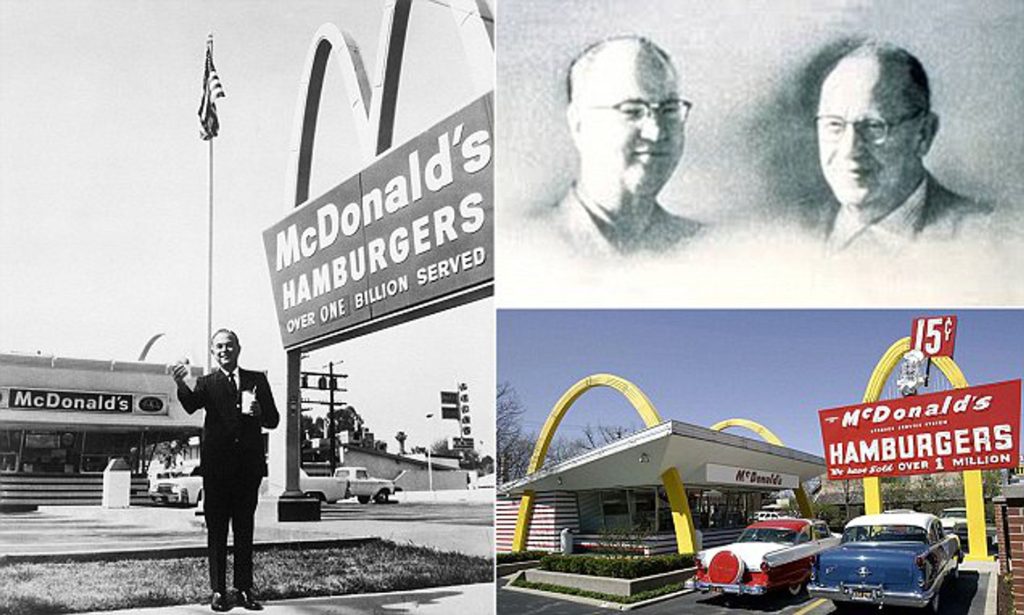
Ray Kroc’s innovations reshaped the fast-food industry. He focused on standardizing operations to ensure consistent quality. Each burger was prepared the same way, regardless of location. Strict rules were enforced for cooking times, portion sizes, and packaging. Kroc rejected cost-cutting measures that compromised quality. He refused to use soybean fillers in hamburger patties, maintaining high standards. The Speedee Service System streamlined food preparation, reducing wait times.
Franchisees had to follow precise guidelines, ensuring uniformity across all outlets. Customer service standards were strict, with refunds for incorrect orders or long waits. This attention to detail set McDonald’s apart from its competitors. Kroc’s approach created a reliable dining experience for customers. His commitment to consistency and quality became the foundation of McDonald’s success.
Aggressive Expansion
Ray Kroc’s aggressive expansion strategy was pivotal for McDonald’s growth. He opened new restaurants across the United States, prioritizing high-traffic areas. This strategy ensured visibility and accessibility for customers. Kroc’s focus was broader than domestic markets; he eyed international opportunities early on. By franchising globally, McDonald’s reached new heights. His commitment to uniformity in service and quality created a trusted brand image.
Kroc’s relentless pursuit of perfection meant regular audits and stringent franchise guidelines. These measures ensured every location met his high standards. He understood the power of marketing and invested heavily in advertising campaigns. This approach made McDonald’s a household name. Kroc’s visionary tactics set the stage for the fast-food giant’s unparalleled success. Through strategic planning and relentless execution, he transformed McDonald’s into a global icon.
The McDonald Brothers‘ Exit
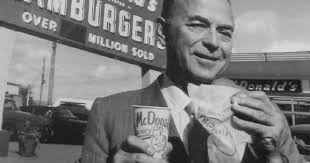
The McDonald brothers, Richard and Maurice, initially resisted Kroc’s expansion ideas. They preferred a small, manageable number of restaurants. Despite their hesitation, Kroc managed to persuade them to franchise the concept. The tension between them grew as Kroc pushed for more changes. In 1961, Kroc bought the company for $2.7 million.
The deal excluded the original San Bernardino location, which annoyed Kroc. He opened a competing McDonald’s nearby, leading to the closure of the original. There was a handshake agreement for a 1% royalty, but documentation still needs to be provided. The brothers eventually exited the business, leaving Kroc in complete control. Their exit marked the end of an era and the beginning of McDonald’s global expansion.
The Speedee Service System
| Aspect | Details |
| Inception | Developed by McDonald brothers by 1948 |
| Focus | Efficiency and speed in customer service |
| Order Process | Orders taken at the counter instead of by waitstaff, minimizing errors |
| Operational Efficiency | Assembly-line method reduced preparation times |
| Worker Roles | Each worker assigned a specific task to enhance productivity |
| Cooking Methods | Standardized to ensure consistent food quality |
| Kroc’s Recognition | Recognized the system’s potential as a blueprint for success |
| Franchise Requirements | Franchisees required to adhere strictly to the system for uniformity across locations |
| Customer Experience | Customers knew exactly what to expect from McDonald’s |
| Industry Impact | Became the backbone of McDonald’s, setting a new standard in the fast-food industry |
| Expansion Significance | Kroc’s adoption of the system was pivotal for McDonald’s expansion |
| Competitive Advantage | Differentiated McDonald’s from competitors, solidifying its reputation |
Retirement and New Ventures
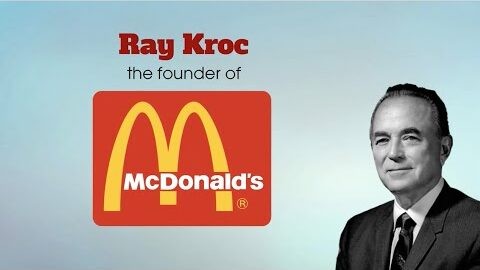
| Aspect | Details |
| Retirement | Retired from running McDonald’s in 1973 |
| New Challenge | Invested in baseball |
| Location of Investment | San Diego, California |
| Team | San Diego Padres |
| Purchase Price | $12 million |
| Initial Ownership Outcome | Padres lost 102 games in first year |
| Fan Attendance | Drew over a million fans in the first year |
| Significance of Attendance | Marked a significant achievement |
| Public Engagement | Took the public address microphone to express frustration |
| Commitment | Showed enduring commitment to new ventures and passions |
Legacy and Impact
Ray Kroc’s influence on the fast-food industry is undeniable—his commitment to consistency set McDonald’s apart. Franchisees had to meet strict standards. This ensured customers received the same experience everywhere. Kroc’s marketing strategies revolutionized brand visibility—heavy investments in advertising paid off.
McDonald’s became a household name worldwide. Kroc’s approach to franchising was also innovative. By selling single-store franchises, he maintained control. This ensured quality and uniformity across locations. Kroc’s legacy extends beyond McDonald’s. His methods became industry standards. Other chains adopted similar practices. His story continues to inspire entrepreneurs. The fast-food giant’s success serves as a testament. Kroc’s relentless pursuit of excellence reshaped dining globally—his vision for McDonald’s lives on today.
Controversies and Challenges
| Aspect | Details |
| Relationship with McDonald Brothers | Tumultuous; clashed over business direction, leading to strained interactions. |
| Expansion Strategy | Aggressive, leading to criticism for prioritizing profit over quality. |
| Competing McDonald’s Location | Decision to open a competing outlet near the original sparked backlash. |
| Allegations of Broken Promises | Disputed handshake agreement for a 1% royalty lingered without resolution. |
| Franchise Model | Rigid model faced pushback from franchisees feeling stifled by stringent guidelines. |
| Overall Approach | Focused on his vision; received both admiration and criticism for his unyielding approach. |
Final Years and Death
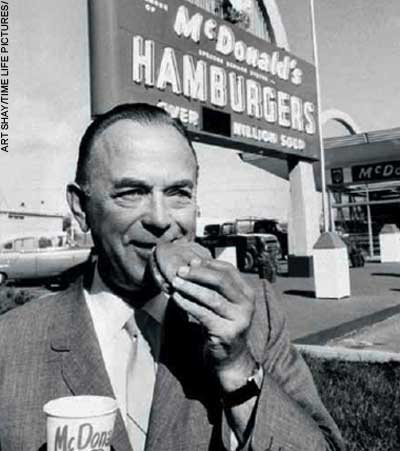
In his final years, Ray Kroc’s health began to decline. Despite his struggles, he remained deeply involved with the San Diego Padres, often attending games and events. His passion for baseball was unwavering, even as he battled illness. Kroc’s relentless work ethic never wavered; he continued to seek new challenges. However, the toll of years of hard work started to show. He spent his later years primarily in Southern California, enjoying the success of his ventures.
In 1980, Kroc suffered a stroke, which significantly affected his health. His condition required ongoing medical attention. Nonetheless, he stayed engaged with his business interests. Ray Kroc passed away on January 14, 1984, at 81. His death marked the end of an era for McDonald’s and the fast-food industry. Kroc’s contributions left an indelible mark on global dining culture.
Posthumous Recognition
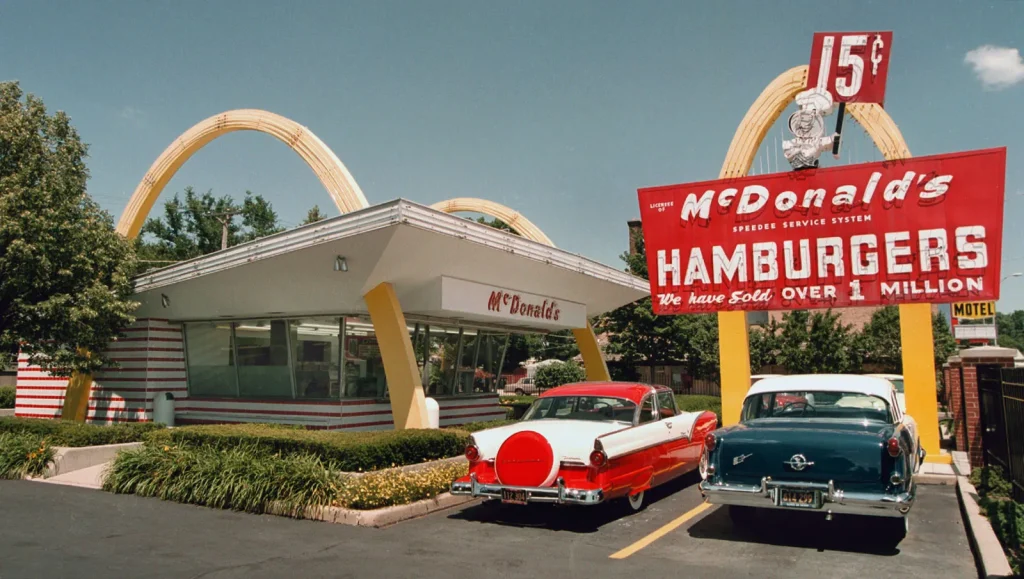
Ray Kroc’s contributions to the fast-food industry have not gone unnoticed. After his death, numerous accolades celebrated his impact on global dining. In 1999, Kroc was inducted into the inaugural class of the San Diego Padres Hall of Fame. His influence extended beyond baseball, cementing his legacy in business history.
McDonald’s continued to honor its vision, maintaining high standards and consistent quality. Books and films have also chronicled his life, highlighting his relentless drive and innovation. His story serves as an inspiration to aspiring entrepreneurs worldwide. Kroc’s legacy endures through these tributes, reflecting his profound impact on McDonald’s and the fast-food industry. His pioneering efforts forever changed the landscape of quick-service dining, setting a benchmark for future business leaders.
Frequently Asked Questions
How much did Ray Kroc buy McDonald’s for?
Ray Kroc bought McDonald’s for $2.7 million in 1961. This purchase included the rights to the name and the Golden Arches logo.
What were Ray Kroc’s main innovations at McDonald’s?
Kroc’s main innovations included standardizing the menu and cooking methods. He also implemented the Speedee Service System, ensuring uniformity and quick service.
How did Ray Kroc expand McDonald’s globally?
Kroc used an aggressive expansion strategy, opening new locations across the U.S. and internationally. His strict franchise model ensured consistency and quality worldwide.
What was Ray Kroc’s involvement with the San Diego Padres?
Kroc bought the San Diego Padres in 1974 for $12 million. His ownership kept the team in San Diego and significantly boosted their attendance.
Conclusion
Ray Kroc’s acquisition of McDonald’s for $2.7 million in 1961 marked a transformative moment in the fast-food industry. His vision and dedication led to the global expansion of a small hamburger stand into an international powerhouse. Kroc ensured a consistent customer experience at every location by emphasizing standardization and quality. His aggressive franchising model allowed McDonald’s to proliferate, becoming a household name worldwide.
Kroc’s impact extended beyond business; his innovative strategies set new benchmarks in the industry. Even after his death, McDonald’s continues to thrive, a testament to his enduring legacy. His journey from a paper cup salesman to the founder of a fast-food empire is a source of inspiration for entrepreneurs everywhere. Ray Kroc’s relentless pursuit of excellence forever changed the landscape of global dining.
